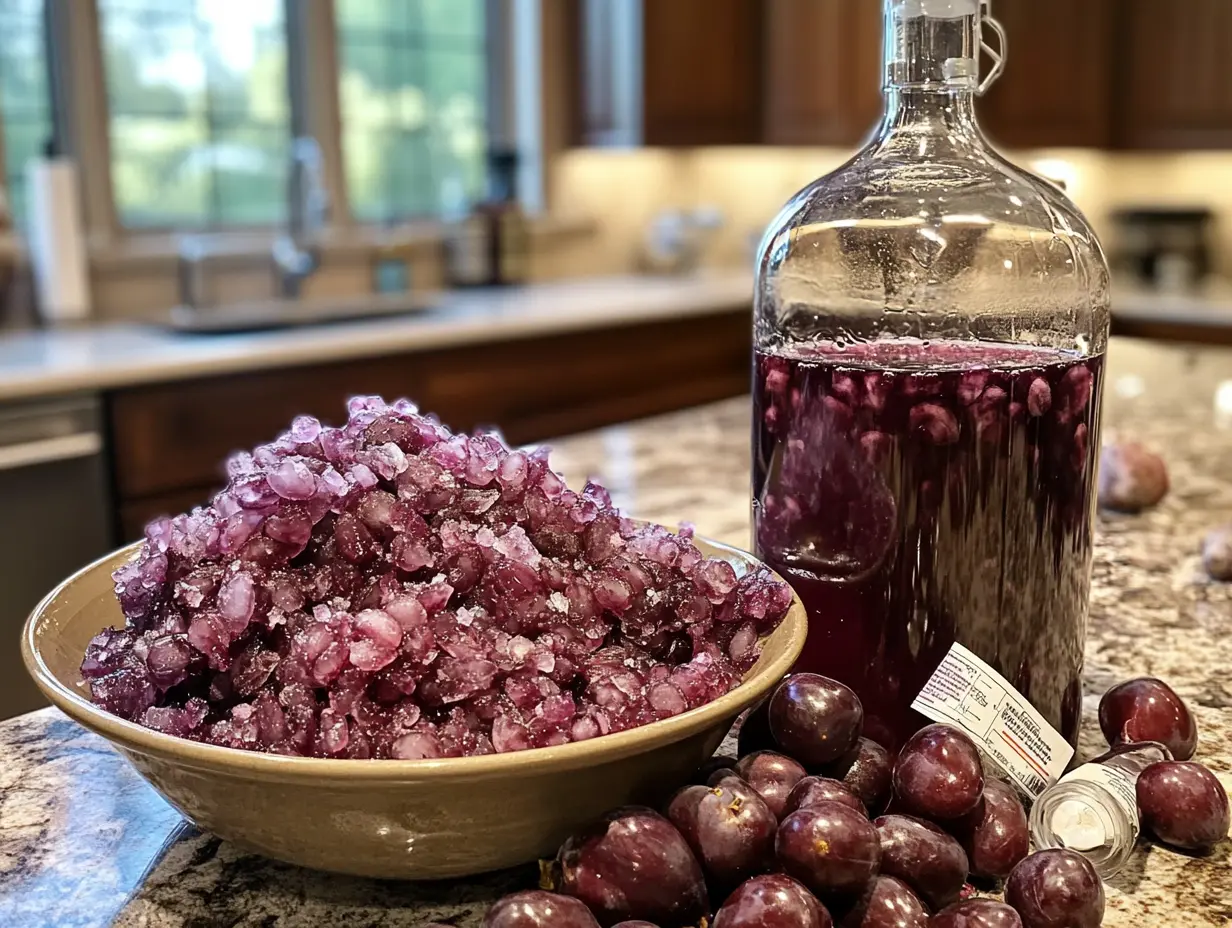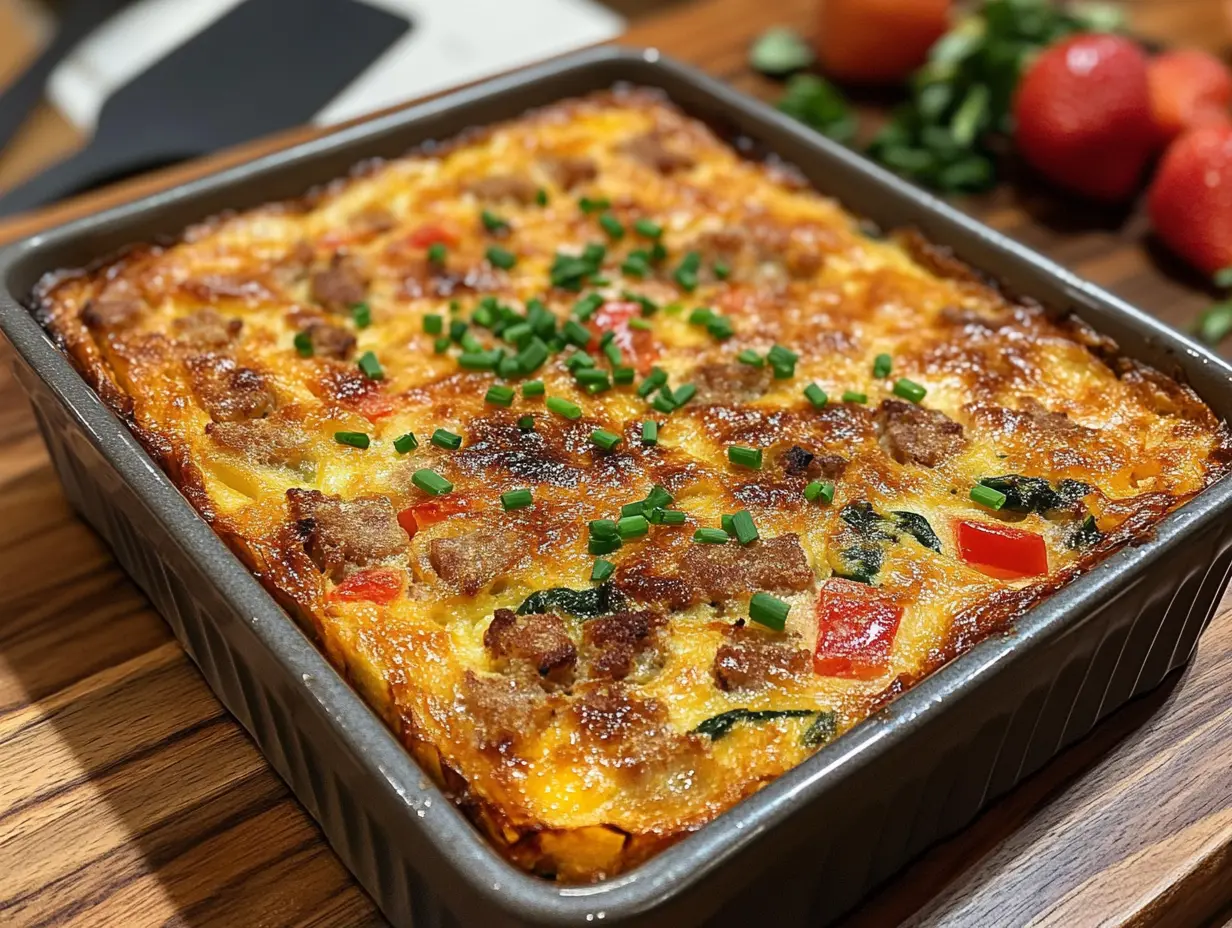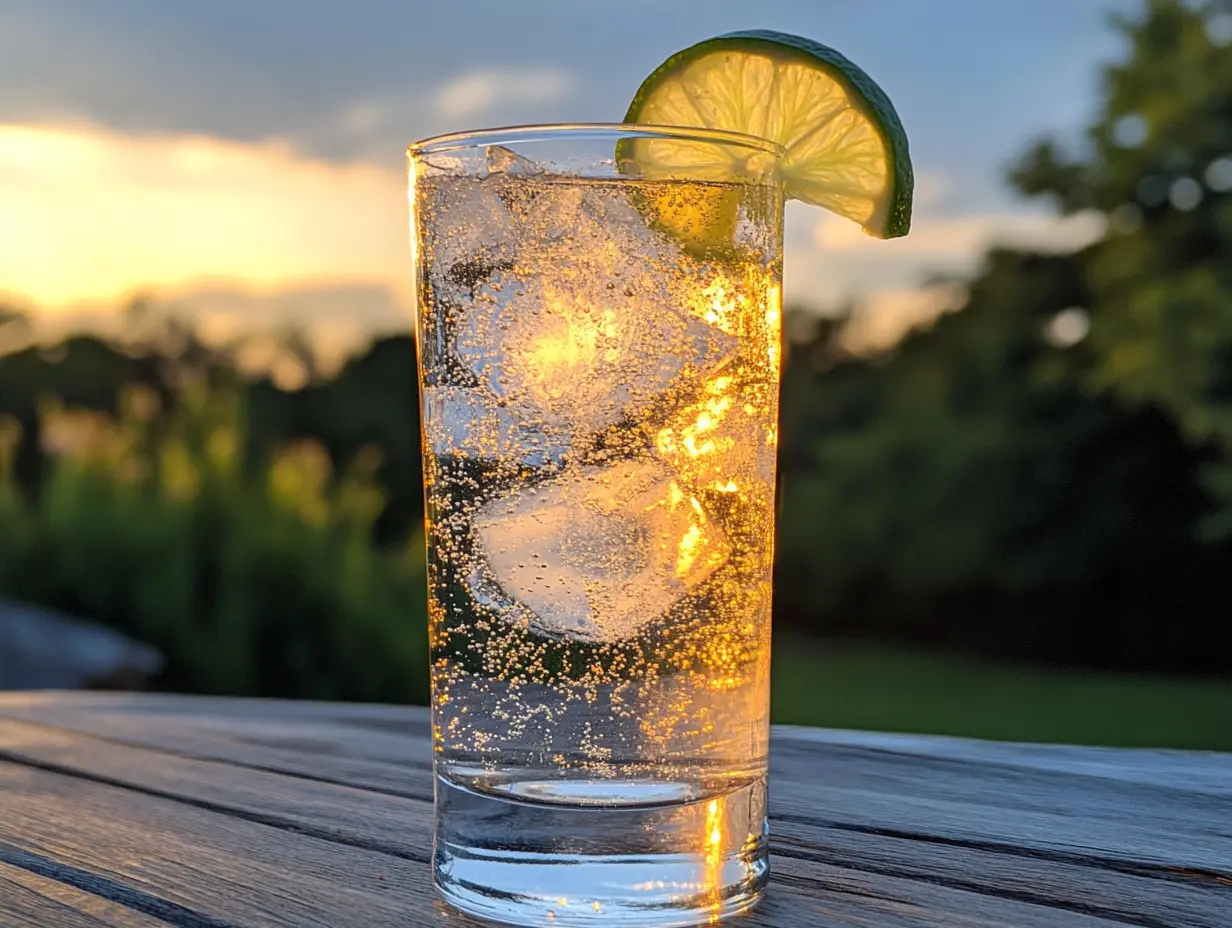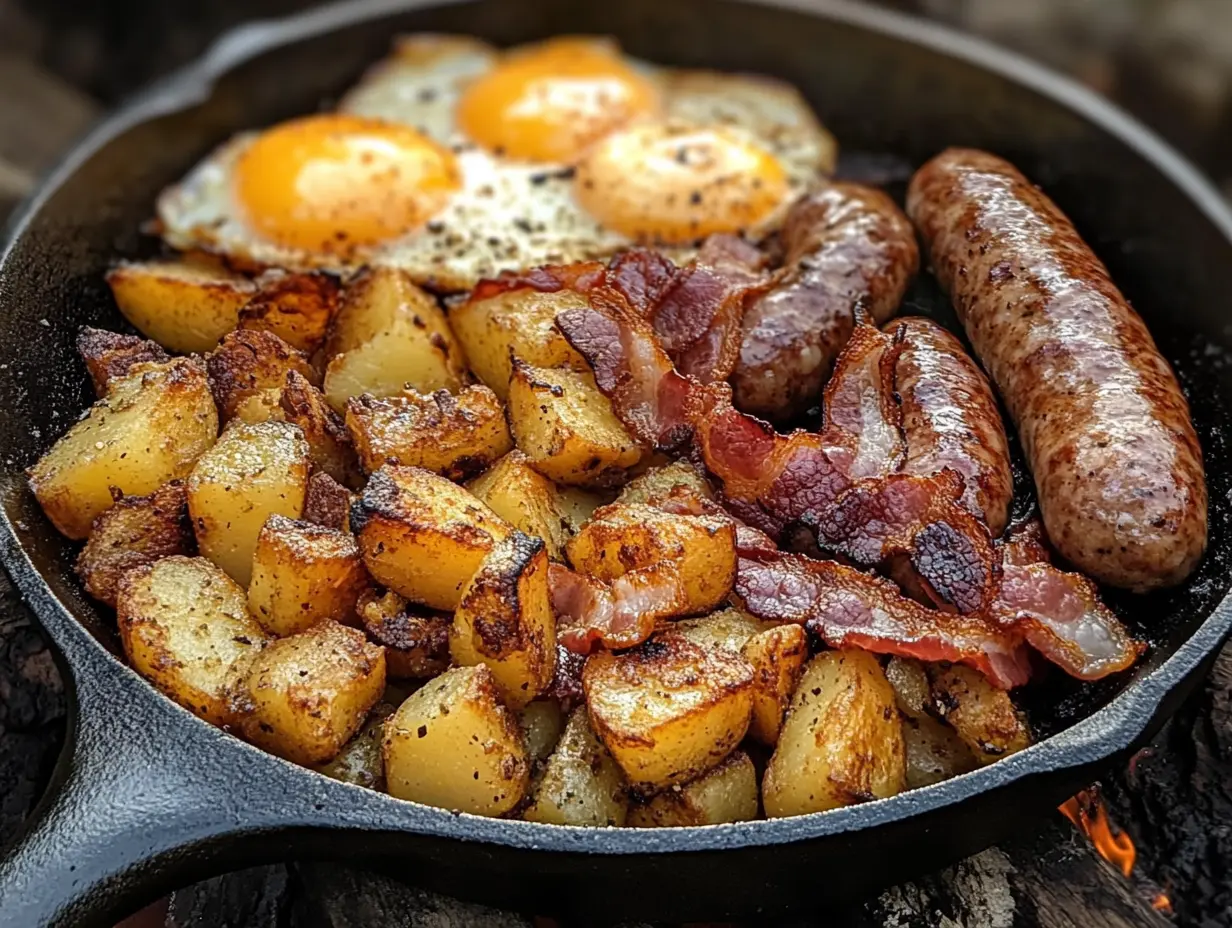Table of Contents
There’s something magical about transforming fresh, plump muscadines into a bottle of homemade wine. My muscadine wine recipe has become a late-summer tradition at our little yellow farmhouse, marking the transition from hot August days to the crisp embrace of fall. The sweet, distinctive flavor of these Southern grapes creates a wine that’s unlike anything you’ll find at the store – a true taste of homegrown goodness that connects us to generations past.
When I first attempted to make muscadine wine, I was intimidated by the process. Would it be too complicated? Would it actually taste good? But after years of perfecting this muscadine wine recipe, I’ve broken it down into five manageable steps that anyone can follow. And trust me, the results are worth every minute spent.
If you enjoy experiencing the satisfaction of creating something delicious from scratch, you might also want to try my venison cube steak recipes or my demerara syrup recipe for your cocktails!
Why You’ll Love This Recipe
There’s something deeply satisfying about making your own wine. Here’s why this muscadine wine recipe deserves a spot in your kitchen repertoire:
- Celebrates seasonal bounty: Takes advantage of muscadine season (late summer to early fall)
- Surprisingly simple: Just five main steps spread over a few weeks
- Economical: Much less expensive than store-bought wine
- Customizable: Easily adjust sweetness to your preference
- Conversation starter: Imagine serving guests wine you made yourself!
- No special equipment needed: Basic kitchen tools will do the job
- Heritage cooking: Connects you to Southern traditions and history
The process transforms humble muscadines into something truly special – a wine that captures the essence of late summer in every sip.
Ingredients
For this muscadine wine recipe, you’ll need:
Primary Ingredients:
- 6-8 pounds fresh muscadine grapes (approximately 3 gallons)
- 2-3 pounds granulated sugar (adjust based on desired sweetness)
- 1 packet wine yeast (Champagne or Montrachet varieties work well)
- 1 Campden tablet (for sterilization)
- 1 teaspoon yeast nutrient
- 1 teaspoon acid blend (available at homebrew stores)
- Filtered water
Equipment:
- 1-gallon glass carboy or food-grade fermenting bucket
- Airlock and rubber stopper
- Large nylon straining bag
- Large pot (non-reactive material like stainless steel)
- Hydrometer (optional but helpful)
- Plastic tubing for siphoning
- Wine bottles and corks
- Sanitizing solution
Substitution tip: If you can’t find muscadines, you can use scuppernongs (the green/bronze variety of muscadines) or even Concord grapes, though the flavor profile will be different.
Timing
- Prep time: 1-2 hours (cleaning, crushing, and initial mixing)
- Primary fermentation: 7-10 days
- Secondary fermentation: 2-3 months
- Aging: 6-12 months (optional but recommended)
- Total time: Approximately 3-12 months from start to bottling
While this muscadine wine recipe requires patience, most of that time is hands-off while fermentation works its magic.
Step-by-Step Instructions
Step 1: Prepare Your Muscadines
Muscadine preparation is crucial for extracting maximum flavor in your muscadine wine recipe.
- Sort through your muscadines, discarding any that show signs of mold or damage.
- Rinse thoroughly under cool water to remove any dirt or debris.
- Place grapes in a large, clean pot.
- Using clean hands or a potato masher, crush the grapes to break the skins. Don’t worry about removing seeds at this stage.
- Transfer crushed grapes to a nylon straining bag placed inside your fermenting bucket.
- Squeeze the bag gently to release initial juice.
Tip: For deeper color and more tannins in your wine, let the crushed grapes sit overnight before proceeding to the next step.
Step 2: Create Your Must
The “must” is the mixture that will eventually become your wine.
- To the juice in your fermenting vessel, add enough filtered water to reach about 1 gallon total volume.
- Add 2 pounds of sugar and stir until completely dissolved.
- Crush and add the Campden tablet to kill any wild yeasts or bacteria.
- Cover loosely and wait 24 hours. This waiting period allows the sulfite from the Campden tablet to dissipate while keeping wild yeasts at bay.
Tip: If you have a hydrometer, now’s the time to take your first reading. For a wine around 12% alcohol, you’re aiming for a specific gravity of about 1.090.
Step 3: Start Fermentation
This is where science and magic converge in your muscadine wine recipe.
- Add the acid blend and yeast nutrient to your must and stir well.
- Prepare your wine yeast according to package directions (usually rehydrating in warm water for about 15 minutes).
- Add the activated yeast to your must and stir gently.
- Secure the airlock to your fermenting vessel to allow carbon dioxide to escape while preventing air from entering.
- Place in a warm (70-75°F), dark location.
Tip: Within 24-48 hours, you should see bubbling activity in the airlock. This is a good sign that fermentation has begun!
Step 4: Monitor Primary Fermentation
Primary fermentation is the most active phase of winemaking.
- For the next 5-7 days, gently squeeze the fruit bag daily to extract more color and flavor.
- After 7 days, remove the fruit bag, allowing any free-run juice to drip back into the fermenter before discarding the solids.
- Continue primary fermentation for another 3-5 days, or until bubbling in the airlock slows significantly.
Tip: The must will start sweet and fruity but gradually develop a more alcoholic aroma as fermentation progresses. This is normal!
Step 5: Secondary Fermentation and Bottling
This final step in the muscadine wine recipe requires the most patience but delivers the most reward.
- Carefully siphon (rack) the wine into a clean glass carboy, leaving the sediment behind.
- Attach the airlock and move to a cool, dark place (60-65°F if possible).
- Let the wine clear for 2-3 months, racking again every 30 days to remove sediment.
- Once completely clear, taste the wine and add sugar syrup if desired for sweetness.
- Bottle the wine in sterilized wine bottles and cork securely.
- Allow bottles to age for at least 6 months (though a year is better) before enjoying.
Tip: If you prefer a sweeter wine, create a simple syrup with 2 parts sugar to 1 part water, boiled then cooled. Add this gradually to taste, but be aware that adding sugar may restart fermentation unless you also add stabilizer.
Cooking Tips
Making wine is both science and art. Here are some tips to help perfect your muscadine wine recipe:
- Temperature matters: Fermentation is happiest between 70-75°F. Too cold, and it stalls; too hot, and off-flavors develop.
- Sanitation is crucial: Every tool that touches your wine must be meticulously clean to prevent spoilage.
- Be patient with aging: Young muscadine wine can be harsh, but time mellows it beautifully.
- Trust your taste: Hydrometer readings are helpful, but ultimately, your personal preference should guide sweetness and acidity adjustments.
- Keep notes: Document quantities, timing, and observations for each batch to refine your process over time.
- Label clearly: Note the date and any special characteristics on each bottle.
- Consider blending: If you make multiple batches, you can blend them later for complexity.
Personal Story
The first time I made muscadine wine was with grapes from my grandfather’s vines. Eric and I had just moved into our farmhouse, and that first autumn, Grandpa arrived at our door with two buckets of purple muscadines. “These come from vines my father planted,” he said, handing me a faded recipe card with his mother’s handwriting. “Time you learned.”
That first batch was less than perfect – a bit too strong and slightly cloudy – but Grandpa didn’t mind. When we uncorked it at Thanksgiving, he held his glass up to the light and smiled. “Not bad for a first try, Livie,” he said, using my childhood nickname. “You’ll get better.”
He was right. Each year, the wine improved, and now our muscadine wine is a family tradition, connecting four generations through taste, time, and the rhythm of seasons. There’s something profoundly satisfying about continuing a heritage as I explain the process to my daughter Lila, who loves helping crush the grapes (though at 6, she’s mostly in it for the purple fingers).
Nutritional Information
While muscadine wine should be consumed in moderation, it does offer some nutritional benefits:
- Muscadines are exceptionally high in antioxidants, particularly resveratrol and ellagic acid
- Contains heart-healthy polyphenols similar to those in red wine
- Provides small amounts of vitamins and minerals from the original fruit
- Low in sodium
- Contains no fat or cholesterol
A standard 5-ounce glass of homemade muscadine wine contains approximately:
- Calories: 120-150 (varies depending on residual sugar)
- Carbohydrates: 4-12g (varies with sweetness)
- Alcohol: 10-14% by volume
Remember that alcohol should be consumed responsibly and in moderation, defined as up to one drink per day for women and up to two drinks per day for men.
Healthier Alternatives
Looking to modify this muscadine wine recipe for dietary preferences? Consider these alternatives:
- Lower alcohol: Use less sugar initially for a lighter wine (around 8-10% alcohol)
- Lower sugar: Allow fermentation to complete fully before bottling for a dry wine with minimal residual sugar
- Non-alcoholic option: Create a muscadine juice instead by crushing grapes, adding minimal sugar, pasteurizing, and bottling without fermentation
- Sparkling variation: Bottle before fermentation completely finishes for a naturally sparkling wine (requires specialized equipment and careful monitoring)
For those interested in muscadine benefits without alcohol, try my lemon balm tea recipe for weight loss that can be enhanced with muscadine juice.
Serving Suggestions
A well-made muscadine wine deserves proper serving and pairing:
- Temperature: Serve slightly chilled at about 55-60°F for optimal flavor
- Glassware: Use standard wine glasses that allow the fruity aroma to concentrate
- Food pairings:
- Southern classics: Fried chicken, barbecue pork, or shrimp and grits
- Cheeses: Medium cheddar, gouda, or pepper jack
- Desserts: Dark chocolate, pecan pie, or vanilla ice cream
- Fresh fruits: Peaches, apples, or pears
For a special occasion, create a regional-themed dinner featuring your homemade wine alongside other Southern specialties like my crawfish fettuccine recipe for a meal guests won’t forget.
Common Mistakes to Avoid
Even experienced home winemakers occasionally hit bumps in the road:
- Impatience with clearing: Rushing to bottle cloudy wine almost always leads to disappointment
- Poor sanitation: This is the #1 cause of spoiled batches – be meticulous about cleaning
- Incorrect fermentation temperature: Too cold stalls fermentation; too warm creates off-flavors
- Oxidation: Minimize air contact during aging and transfers
- Insufficient aging: Young muscadine wine can be harsh – give it time
- Cross-contamination: Keep winemaking equipment separate from other kitchen tools
- Incorrect storage: Wine should be stored on its side in a cool, dark place
Storing & Reheating Tips
Your muscadine wine represents months of patience and care, so proper storage is essential:
- Storage position: Store bottles on their sides to keep corks moist
- Temperature: Aim for a consistent 55-65°F
- Light exposure: Minimize – use colored bottles and a dark storage area
- Humidity: 50-70% is ideal (too dry can shrink corks, too humid can damage labels)
- Aging potential: Properly made muscadine wine can continue improving for 2-3 years
- Once opened: Re-cork and refrigerate; consume within 3-5 days
Note: Unlike food recipes, wine doesn’t require “reheating” but should be served at the appropriate temperature (55-60°F for muscadine wine).
FAQs
Q: Do I need to remove the seeds from muscadines before crushing?
A: No, the seeds can remain during fermentation. They’ll settle out during the clearing process, and any tannins they impart actually add structure to your muscadine wine recipe.
Q: My wine is too sweet/not sweet enough. Can I adjust it?
A: Yes! For sweeter wine, add simple syrup to taste before bottling (plus stabilizer to prevent refermentation). For drier wine, allow fermentation to complete fully, or try a different yeast variety in your next batch.
Q: How do I know when fermentation is complete?
A: Bubbling in the airlock will slow significantly or stop. For certainty, take hydrometer readings on consecutive days – consistent readings indicate fermentation has finished.
Final Thoughts
There’s something deeply satisfying about transforming a basket of muscadines into wine that captures summer’s essence in a bottle. This muscadine wine recipe isn’t just about creating a beverage – it’s about connecting with agricultural traditions, practicing patience, and eventually sharing the literal fruits of your labor with friends and family.
I still have my grandmother’s recipe card, now splattered with purple stains from my own batches of muscadine wine. Each year when the grapes ripen, I feel her presence in my kitchen as I begin the process again. I hope this muscadine wine recipe inspires you to start your own tradition, creating something truly special from these unique Southern grapes.
If you try this recipe, I’d love to hear how your muscadine wine turns out! Share your winemaking journey in the comments below, or tag me in your photos on social media. And if you’re looking for more Southern-inspired recipes to serve alongside your homemade wine, don’t miss my collection of comfort food classics!
Print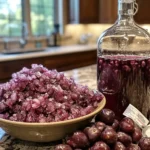
muscadine wine recipe: How 5 Steps Can Create Perfection
- Total Time: 1 hour 30 minutes
- Yield: 1 gallon 1x
- Diet: Gluten Free
Description
Ingredients
For this muscadine wine recipe, you’ll need:
Primary Ingredients:
- 6–8 pounds fresh muscadine grapes (approximately 3 gallons)
- 2–3 pounds granulated sugar (adjust based on desired sweetness)
- 1 packet wine yeast (Champagne or Montrachet varieties work well)
- 1 Campden tablet (for sterilization)
- 1 teaspoon yeast nutrient
- 1 teaspoon acid blend (available at homebrew stores)
- Filtered water
Equipment:
- 1-gallon glass carboy or food-grade fermenting bucket
- Airlock and rubber stopper
- Large nylon straining bag
- Large pot (non-reactive material like stainless steel)
- Hydrometer (optional but helpful)
- Plastic tubing for siphoning
- Wine bottles and corks
- Sanitizing solution
Instructions
Step 1: Prepare Your Muscadines
Muscadine preparation is crucial for extracting maximum flavor in your muscadine wine recipe.
- Sort through your muscadines, discarding any that show signs of mold or damage.
- Rinse thoroughly under cool water to remove any dirt or debris.
- Place grapes in a large, clean pot.
- Using clean hands or a potato masher, crush the grapes to break the skins. Don’t worry about removing seeds at this stage.
- Transfer crushed grapes to a nylon straining bag placed inside your fermenting bucket.
- Squeeze the bag gently to release initial juice.
Tip: For deeper color and more tannins in your wine, let the crushed grapes sit overnight before proceeding to the next step.
Step 2: Create Your Must
The “must” is the mixture that will eventually become your wine.
- To the juice in your fermenting vessel, add enough filtered water to reach about 1 gallon total volume.
- Add 2 pounds of sugar and stir until completely dissolved.
- Crush and add the Campden tablet to kill any wild yeasts or bacteria.
- Cover loosely and wait 24 hours. This waiting period allows the sulfite from the Campden tablet to dissipate while keeping wild yeasts at bay.
Tip: If you have a hydrometer, now’s the time to take your first reading. For a wine around 12% alcohol, you’re aiming for a specific gravity of about 1.090.
Step 3: Start Fermentation
This is where science and magic converge in your muscadine wine recipe.
- Add the acid blend and yeast nutrient to your must and stir well.
- Prepare your wine yeast according to package directions (usually rehydrating in warm water for about 15 minutes).
- Add the activated yeast to your must and stir gently.
- Secure the airlock to your fermenting vessel to allow carbon dioxide to escape while preventing air from entering.
- Place in a warm (70-75°F), dark location.
Tip: Within 24-48 hours, you should see bubbling activity in the airlock. This is a good sign that fermentation has begun!
Step 4: Monitor Primary Fermentation
Primary fermentation is the most active phase of winemaking.
- For the next 5-7 days, gently squeeze the fruit bag daily to extract more color and flavor.
- After 7 days, remove the fruit bag, allowing any free-run juice to drip back into the fermenter before discarding the solids.
- Continue primary fermentation for another 3-5 days, or until bubbling in the airlock slows significantly.
Tip: The must will start sweet and fruity but gradually develop a more alcoholic aroma as fermentation progresses. This is normal!
Step 5: Secondary Fermentation and Bottling
This final step in the muscadine wine recipe requires the most patience but delivers the most reward.
- Carefully siphon (rack) the wine into a clean glass carboy, leaving the sediment behind.
- Attach the airlock and move to a cool, dark place (60-65°F if possible).
- Let the wine clear for 2-3 months, racking again every 30 days to remove sediment.
- Once completely clear, taste the wine and add sugar syrup if desired for sweetness.
- Bottle the wine in sterilized wine bottles and cork securely.
- Allow bottles to age for at least 6 months (though a year is better) before enjoying.
- Prep Time: 90 minutes
- Cook Time: 0 minutes
- Category: Beverage
- Method: Fermentation
- Cuisine: American
Nutrition
- Serving Size: 5 oz
- Calories: 150 per serving
Keywords: homemade muscadine wine recipe, southern muscadine wine, how to make muscadine wine, muscadine fermentation process, best muscadine wine recipe

